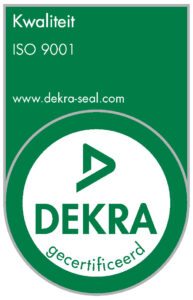Visualizing & characterizing thermal behavior of transistors
A well known technique for characterizing transistors is doing Pulsed-IV measurements. Basically the goal is to shorten the pulses as much as possible to avoid thermal effects. The AMCAD / Maury AM3200-PIV system is able to produce pulses of 200ns so the thermal effects are reduced to a minimum.
However, when a transistor is being used, for instance for wireless communication or EV kind of applications, pulses are normally longer. Thus thermal modelling for a device becomes critical. It doesn’t make sense to spend millions in developing semiconductors with great efficiency and outstanding performance meanwhile it can’t be used to the max because of thermal issues.
As mentioned, Thermal effects in terms of “Voltage” and “Current” can be visualized very easy. In our lab at HITECH BV I’ve tested an GaN 125W power transistor on a test fixture with the AM3202 PIV-System and AMCAD Software. To make thermal effects visible I used a pulse of 200us and a current of roughly 1A at 30V. Analyzer the results, see image below, the red IV-curve represents the behavior of the device at the beginning of the pulse. So in that stage thermal effects are minimal. The green curve shows the behavior at the end of the pulse. Clearly the current through the drain is reduced by 100mA at 30V.

Let’s take a closer look at the current and voltage between the drain and source of the transistor and see how these are changing over time when the transistor is heating up.

In order to improve thermal behavior of a device, the engineering team needs to have full insight into how and where the energy builds up. The first idea is to make use of a thermal imaging camera. This makes a lot of sense but practically the highest spatial resolution of such camera is roughly 2um. Semiconductors become more dense and details may be missed. Moreover, an accurate thermal measurement can be made on a device with a reasonable emissivity coefficient. Metal layers do reflect too much, they act like a mirror reflecting ambient temperature.
Microsanj Thermal imagers are based on thermal reflectance which means there is a source of light with a known spectral wavelength. Due to temperature changes the reflected wavelength is slightly different. This reflectance is measured with a thermal calibration. Beneficial for such system different wavelengths can be chosen. For the tests I’ve done I’ve used 365nm as Gallium Nitride is transparent above roughly 400nm. But I could have chose as well 530nm for metallic objects or any other wavelength.
For the test I’ve used theMicrosanj EZ-500 benchtop thermal imager. The system has a standard uncooled camera for IR-mode and for TR-Mode a 5x, 20x and 100x microscope (roughly 60nm/pixel) and wavelengths from 365 to 800nm. The time resolution used for this test is 5us per sample. For analysis I’ve used Microsanj SanjANALYZER Plus software. With all test I’ve kept Vds at 28V and the current at roughly 1A.
Testing with the thermal imager in IR-Mode gave me the following results. Please note, all thermal measurements are relative, not absolute.

Since the the DC-Power is only 1/6 of the max power of the device results shown here below are in line of expectation.

Let’s take a closer look at our transistor and particularly to the GaN-Material. Therefor during the measurement in TR-Mode I used a wavelength of 365nm and the 20x microscope. There were two ROI’s selected, shown in the image below.

The EZ-500 system allows us to measure thermal versus time and measure how and when specific parts of a device is heating up. I’ve created a small video footage showing the pulse over 500us.
Obviously, even after turning of the device electrically there is energy inside te material causing te green area to heat up a little more.

Also temperature measured with TR-Mode is higher compared with IR-Mode. Main reason for this difference is because the objects are too small for IR-Mode and energy is averaged across the pixel.
The final test is with the 100x microscope with a wavelength of 530nm. Please note at this spectral wavelength Gallium Nitride is transparent. The object measured is the access from via to Gate.

The spatial resolution of this calibrated temperature measurement is roughly 60nm. These results give detailed information about heath distribution within a Transistor as shown below


The combination of doing PIV measurements with Maury’s / AMCAD’s AM3200 system and do in depth Thermal analysis with an EZ-THERM, NANO-Therm or a PICO-Therm of Microsanj does provide in depth insight about thermal effects of a device. This insight is needed for improving a design and getting the real maximum performance out of it.
Please contact us if there are any questions. We at Hitech BV have the system operational and we are happy providing an (online) demonstration.

 HITECH
HITECH